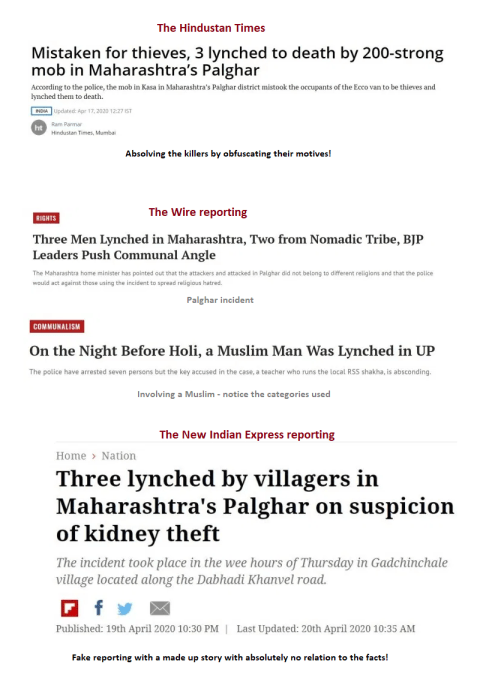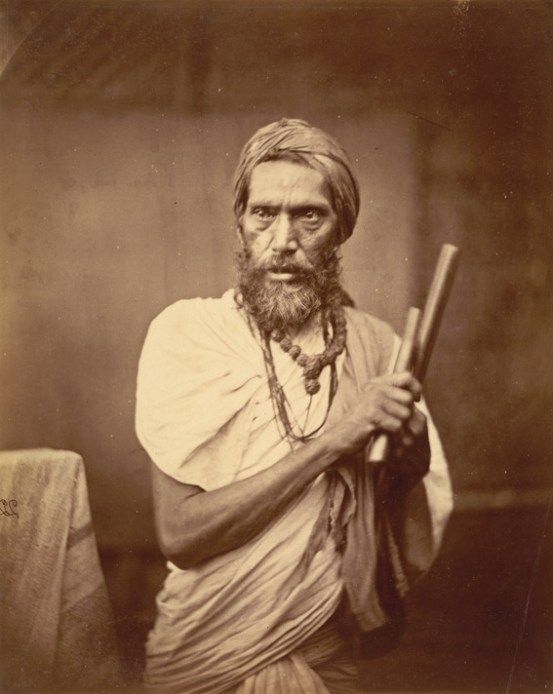India Journey and Geopolitics: Silence Within, Chaos Outside
My India journey started with Mahakumbh, followed by a conference on geopolitics. The world is changing, and we need to focus on the motivations behind these changes.

On April 16th, in what has come to be known as the Palghar Lynching case, two Sanyaasis from the Dashanaami order were killed mercilessly by a mob in Palghar district.
The incident occurred on the night of April 16 when two ascetics, 70-year-old Mahant Kalpavruksha Giri and 35- year-old Sushilgiri Maharaj, who stayed in an ashram in Kandivali, decided to go to Surat to attend a funeral. The two subsequently hired a car driven by Nilesh Yelgade (30) to travel from Kandivali till Surat. In an attempt to avoid being stopped on their journey, the three appeared to have taken the back roads of Palghar district to enter Gujarat rather than use the Mumbai-Gujarat highway. The three were, however, stopped by a sentry of the forest department close to Gadchinchle village.Indian Express
This forest department police sentries then – inexplicably – handed over the frail old man to the mob for a massacre that has rarely been seen. A mob had gathered and it killed the two ascetics and their driver.
The video where the elderly Sanyaasi is depending on the forest department policeman to help him but that man simply hands him to the mob has numbed the entire nation and indeed anyone with even an iota of humanity left. Of course, some have chosen to either keep silent or simply wish the whole incident away. It was a crowd that killed two Hindu sanyaasis. That is a fact. The motivation to kill those two ascetics in cold blood couldn’t have been secular in any way. It is not clear who the killers were, but it needs to come out.
Some media outlets, with a record of anti-Hindu slant in their reporting while they choose to call themselves “Secular” – in order to blame the victim – have already started calling the Sanyaasis as “thieves”. The truth of course is very different.
Let us look into how the Indian media, when it actually found the time to even report on these killings, tried to absolve the killers by obfuscating their motives and almost blaming the victims.
Some concocted an entire fictional story. But never asked the basic and the most obvious question while lapping on the various cover-up narratives dished out to them – from WHICH angle and how can anyone mistake that frail old man of 70 years as a thief?
He could hardly walk!
Anyone who gave such cock-and-bull nonsense should be immediately called out for lying and hiding the real motive! But more importantly, a media which first ignored the whole incident and then tried to downplay it should be held as guilty!
The Indian media was falling head over heals to buy whatever outlandish nonsense that anyone could lay their hands on to downplay the sheer evil that these killings were done with! Here are some samples which say a lot about our media’s character, or rather complete lack of it. Check out more news reports from here.

Let us understand what a Dashanaami Sanyasi really is. What is the order and how their ascetics live their lives.
As per this post from True Indology (many thanks to him for his work!), the order or Akhara was founded by Adi Shankaracharya. And this was divided into two groups: Shaastra-dhaaris and Astra-dhaaris. The former group specializes in scriptures and the latter in warfare and is further parsed out into several other akharas.
When a person enters the order of the Dashanaamis and becomes a sanyasi, he is devoid of any material possessions. All he takes along with him is a staff (for walking) and a small pot (lota). He is only in his loincloth which is saffron. These sanyaasis are also called the Ekadandi sanyasis, because they are the “wandering renunciates carrying a single staff”. They are different from the Tridandi sanyasis from the Shaivaite Tridandi Sanyasis (source).

This entire order is known as Dashanaami because Adi Shankara described the whole spiritual order into 10 aspects and gave them those descriptions or identifications or Naam. These identification are normally linked to the spiritual practices, rituals, and processes that a certain group will follow. All the identified groups and aspects ultimately lead to the highest state of Moksha. These groups were also linked to one of the four Vedas.
When a sanyaasi enters the Dashanaami tradition or order, he takes one of the 10 names. So the format of the name is – TITLE + PERSONAL NAME + SUB-ORDER NAME. For example: Swami Chinmayananda Saraswati (source).
These 10 identifications that Adi Shankara elucidated are given in the table. The two Sadhus who were killed by the mad crowd were from the Giri order.
| Aspects of Vedanta | Rough Translation in English |
| Giri | Hill |
| Puri | City |
| Bharati | Learning |
| Vana | Wood |
| Aranya | Forest |
| Parvata | Mountain |
| Ashram | Hermitage |
| Sagar | Ocean |
| Tirtha | Pilgrimage |
| Sarwaswati | Wisdom |
Adi Shankara set up four main seats of Dharmic Spiritual knowledge and work in the four directions of the country – Sringeri (Karnataka) in South, Govardhan Math (Puri, Odisha) in East, Sharada Math (Dwarka) in West, and Joshi Math (Badrinath) in the North (check an account of the writer’s journey to Badrinath). One of the 10 Dashanaami groups is associated with the four Matha and with one Veda. Here is the breakup.
| Math | Adi-Shankara Shishya | Mahavaakya | Sampradaya | Direction | Dashanamis | Veda |
| Sringeri Math, Karnataka | Sureshvaracharya | Aham brahmāsmi | Bhūrivala | South | Puri, Bharati, Saraswati | Yajurved |
| Goverdhan Math, Puri | Padmapadacharya | Prajñānam brahma | Bhogavala | East | Vana, Aranya | Rigved |
| Sharada Math, Dwarka | Hastamalakacharya | Tattvamasi | Kitavala | West | Tirtha, Ashram | Saamved |
| Joshi Math, Badrinath | Totakacharya | Ayamātmā brahma | Nandavala | North | Giri, Parvata, Sagar | Atharvaved |
With additional inputs from Sringerisharadapeetham website
The Dashanaami Sadhus follow a strict ascetic lifestyle and live by these rules.
Such is the level of commitment to the most ascetic form of life that these Sanyasis follow.
In 1664, when Aurangzeb’s generals – Mirza Ali and Abdul Ali attacked Kashi, the Dashanaami sanyasis (monks) fought the battle to defend the temple and defeated the invading army after an entire day’s battle.
“At the Kashi Kshetra in Samvat 1721 (—1664 A.D.) they own the victory in a fight with the Sultan ( ? Aurangzib ) and gained great glory. From sunrise to sunset the battle raged and the Daśanāmis proved themselves heroes; they preserved the honour of C’s seat. They defeated the Muslims Mirza Ali and Turang Khan ?) and Abdul Ali’.Nirvani records
This was not all. When the invading Muslim armies from Kabul and Balochistan attacked Jodhpur, the monks from Atal Akhara of Daśanāmi order came to the rescue of the local king. They defeated them and took away their arms. In additional, they made them swear on the Quran that they would never again invade Marwar.
When Ahmed Shah Abdali was rampaging in India, his forces entered Gokul. His band of 40,000 Afghans wanted to destroy the temple of Lord Krishna (Gokul Nath). 4000 Naga Sadhus of Gokul came out to fight Abdali’s forces. 2000 attained to their samadhi in that battle. Abdali lost and retreated from Gokul without doing any damage.
The Sannyasi Revolt between 1770 and 1820 were started by the Dashanaami Sanyasis against the British.
The monks and ascetics who fought so our culture and country could be saved and kept alive are now the victim of the same forces they had fought to start off with.